The Skyscraper Museum is devoted to the study of high-rise building, past, present, and future. The Museum explores tall buildings as objects of design, products of technology, sites of construction, investments in real estate, and places of work and residence. This site will look better in a browser that supports web standards, but it is accessible to any browser or Internet device.
UPCOMING PROGRAMS
JANUARY 2010 | An International Conference in Hong Kong
The Skyscraper Museum, The Hong Kong | New York Urban Exchange Group, and AIA Hong Kong present the second of an ongoing exchange between the world's great vertical cities.
VERTICAL DENSITY: THE PUBLIC DIMENSION will be held in Hong Kong over January 21 and 22.
Click here to read more about the event and to RSVP see www.hk-ny.com
Fall 2009 | SHANGHAI SKYLINE
In conjunction with its exhibition CHINA PROPHECY, The Skyscraper Museum will present a lecture series that explores in depth--and height--the sensational
growth of Shanghai's skyline over the past three decades.
Click here for additional information and the video archive.
WINTER 2010 | BOOK TALKS
January 12: Judith Stonehill Book Talk
February 23: Andrew Dolkart Book Talk
March 24: Donna Goodman Book Talk
Book talks are held at The Skyscraper Museum from 6:30-8 pm.
The gallery and exhibition, CHINA PROPHECY: SHANGHAI,
are open for viewing from 6 pm. All events are free of charge. Please RSVP to [email protected]
with the name of the program you would like to attend.
Please be aware that reservation priority is given to Members of The Skyscraper Museum. Not a member? Become a Museum member today!
Click here for our Programs Archive Video Index!
JANUARY 12 | 6:30-8 pm
Judith Stonehill
NEW YORK'S UNIQUE & UNEXPECTED PLACES
(Universe Publishing 2009)
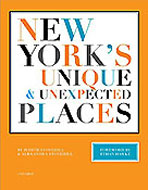
Judith Stonehill is the author of Greenwich Village and Brooklyn. She was the co-owner of New York Bound Bookshop and vice president of the South Street Seaport Museum.
FEBRUARY 23 | 6:30-8 pm
Andrew Dolkart
THE ROW HOUSE REBORN:
Architecture and Neighborhoods in New York City, 1908-1929
(The Johns Hopkins University Press 2009)
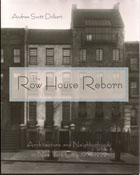
In The Row House Reborn, Dolkart traces this aesthetic movement from its inception in 1908 with architect Frederick Sterner's complete redesign of his home near Gramercy Park to a wave of projects for the wealthy on the East Side to the faux artist's studios for young professionals in Greenwich Village. This significant development in the history of housing and neighborhoods in New York has never before been investigated. The Row House Reborn will interest architectural and urban historians, as well as general readers curious about New York City architecture and neighborhood development.
Andrew S. Dolkart is the James Marston Fitch Professor of Historic Preservation at Columbia University's Graduate School of Architecture of Architecture, Planning, and Preservation. He has written extensively about the architecture and development of New York, including the award-winning Morningside Heights: A History of Its Architecture and Development and the Guide to New York City Landmarks. He has curated numerous exhibitions and is well-known for his walking tours of New York City neighborhoods.
MARCH 24 | 6:30-8 pm
Donna Goodman
A HISTORY OF THE FUTURE
(The Monacelli Press 2008)
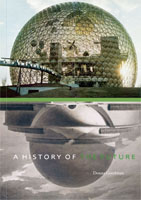
A History of the Future explores the impact of modern technology on design and planning, beginning with Renaissance concepts that laid the foundations for modern visionary work and concluding with emerging projects in sustainable design. It also includes relevant projects in related fields, such as film, photography, and industrial design. Profusely illustrated, A History of the Future is a visual survey of the heroic, utopian, and occasionally misguided visions of the twentieth century.
Donna Goodman has taught architecture and urban planning for more than twenty years at prestigious design schools including Pratt Institute, Parsons School of Design at the New School, Rhode Island School of Design, and New York University. Her architectural practice focuses on sustainable design. The author lives in New York.
2009 BOOK TALKS
DECEMBER 8
David Owen
GREEN METROPOLIS:
Why Living Smaller, Living Closer, and Driving Less are the Keys to Sustainability
(Riverhead Books 2009)
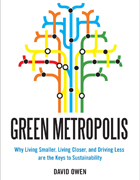
David Owen’s GREEN METROPOLIS redefines what it means to be green, and offers vital insights into how to make our way to a more sustainable future: instead of depending on the acquisition of fancy new "green" gadgetry or the advent of new energy-related technologies, we should look to the lo-fi solutions already at work in dense cities around the globe.
David Owen has been a staff writer for The New Yorker since 1991. Before joining The New Yorker, he was a contributing editor at The Atlantic Monthly, and prior to that, a senior writer at Harper’s and a frequent contributor to Esquire. He is also a contributing editor at Golf Digest and the author of several previous nonfiction books. He lives in northwest Connecticut with his wife, writer Ann Hodgman, and their two children.
DECEMBER 1
Randall Mason
THE ONCE AND FUTURE NEW YORK:
Historic Preservation and the Modern City
(University of Minnesota Press 2009)
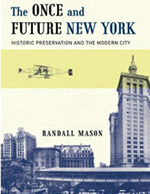
Rich with archival research, The Once and Future New York focuses on three major projects—the restoration of City Hall Park, the ultimately failed attempt to save historic St. John’s Chapel, and the construction of the Bronx River Parkway. Challenging several myths about historic preservation, Mason asserts that preservationists were not simply antiquarians concerned only with architecturally significant buildings, but that many were social reformers interested in recovering the city’s collective history. He demonstrates that, rather than being fundamentally opposed to growth, historic preservation in this period was integral to modern urban development.
Randall Mason is associate professor in the School of Design at the University of Pennsylvania and coeditor of Giving Preservation a History: Histories of Historic Preservation in the United States.
NOVEMBER 23
Paul Goldberger
BUILDING UP AND TEARING DOWN: Reflections on the Age of Architecture (The Monacelli Press 2009) and
WHY ARCHITECTURE MATTERS
(Yale University Press 2009)
CLICK HERE FOR PAUL GOLDBERGER VIDEO AND PODCAST
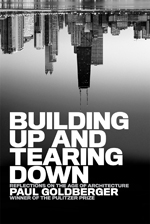
Paul Goldberger Building Up and Tearing Down
(The Monacelli Press 2009)
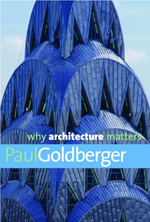
Paul Goldberger
Why Architecture Matters
(Yale University Press 2009)
Paul Goldberger is the architecture critic for The New Yorker, where since 1997 he has written the magazine’s celebrated “Sky Line” column. He holds the Joseph Urban Chair in Design and Architecture at The New School in Manhattan. He began his career at The New York Times, where in 1984, he received the Pulitzer Prize for Distinguished Criticism.
OCTOBER 1
Anthony Flint
WRESTLING WITH MOSES:
How Jane Jacobs Took on New York's Master Builder and Transformed the American City
(Random House 2009)
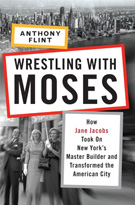
Wrestling with Moses is the tale of a local battle with far-ranging significance. By confronting Moses and his vision, Jacobs forever changed the way Americans understood the city, and inspired citizens across the country to protest destructive projects in their own communities.
Anthony Flint is author of Wrestling with Moses: How Jane Jacobs Took on New York's Master Builder and Transformed the American City, and director of public affairs for the Lincoln Institute of Land Policy in Cambridge. He has been a journalist for over 20 years, primarily at The Boston Globe, where he covered development, urban design, housing, and transportation. His first book, This Land: The Battle over Sprawl and the Future of America, was published by Johns Hopkins University Press. He has been a visiting scholar and Loeb Fellow at Harvard University's Graduate School of Design, and a policy adviser in Massachusetts state government, and is a Citistates Associate. He is a graduate of Middlebury College and Columbia University's Graduate School of Journalism.
SEPTEMBER 22
Ann Buttenwieser
GOVERNORS ISLAND:
The Jewel of New York Harbor
(Syracuse University Press 2009)
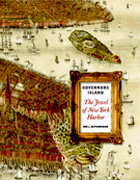
Records from Castle Williams reveal an evolving national penal system, while those from the hospital tell the story of worldwide contagion and local sanitation. Accounts of the lives of the island’s female residents offer insight into ethnic assimilation and the changing roles of women in the military, and a compendium of military and civilian recreational life on the island illuminates the changing meanings of open space and recreation over time. Ann L. Buttenwieser brings this rich legacy to life, creating a striking portrait of the island through never-before-published photographs, blueprints, architectural plans, and interviews with former residents.
Ann L. Buttenwieser is an urban planner and waterfront historian and the author of Manhattan Water-Bound: Manhattan’s Waterfront from the Seventeenth Century to the Present. She serves on The Skyscraper Museum Board of Directors.
AUGUST 4
Jane King Hession and Debra Pickrel
FRANK LLOYD WRIGHT IN NEW YORK:
The Plaza Years, 1954-1959
(Gibbs Smith 2007)
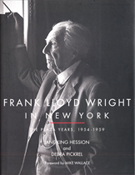
Jane King Hession, a native of Nyack, New York, received her M.Arch. from the University of Minnesota. An architectural writer and historian with interests in Frank Lloyd Wright and mid-century modernism, she is the coauthor of Ralph Rapson: Sixty Years of Modern Design. Hession resides in Alexandria, Virginia.
Debra Pickrel is a New York journalist who has written on architecture and design for Architectural Record, House Beautiful, Metropolis, and Preservation. She is also the author of A Day in Turtle Bay, a walking tour of her Manhattan neighborhood with a foreword by Walter Cronkite. A former board member of the Frank Lloyd Wright Building Conservancy, Pickrel is a journalism graduate of the University of North Carolina at Chapel Hill and received her M.A. in Historic Preservation from Goucher College. She is a native of Richmond, Virginia.
JULY 14
Loretta Lorance
BECOMING BUCKY FULLER
(The MIT press 2009)
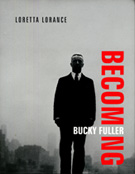
Drawing on a close reading of Fuller's personal papers (in particular, the multivolume scrapbook, Chronofile), Lorance looks at Fuller's first independent project, the Dymaxion House, and finds that what really happened differs from the authorized version. According to Fuller himself and most secondary sources, after a series of personal crises in the 1920s—including the death of his young daughter, thoughts of suicide, and a "year of silence" during which he pondered his purpose in life—Fuller resolved to devote himself to the betterment of society by offering the public economical, efficient, and modern manufactured housing. But the private papers tell a different story; one of his initial motivations for designing the Dymaxion House was simply to make money from its manufacture. When that didn't work, Fuller began to emphasize its possibilities rather than its practicalities. By the mid-1930s, Lorance shows, Fuller the public figure had gone from being an entrepreneur with a product to being a visionary with an idea. He had become Bucky Fuller.
Loretta Lorance is an architectural historian. She teaches in the School of Visual Arts in New York City.
JUNE 23
Scott Johnson
TALL BUILDING:
Imagining the Skyscraper
(Balcony Press 2008)
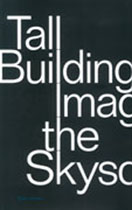
Scott Johnson is a partner of the distinguished Los Angeles architecture firm, Johnson/Fain, and is the newly appointed Director of the USC Graduate Architectural Program. A leader in the architectural discourse & issues of urban design in and outside of Los Angeles, he has worked on a wide range of projects including the MGM Tower, MET Lofts, and the Solano County Government Center. Johnson is also the author of Figure/Ground: A Design Conversation and The Big Idea: Criticality and Practice in Contemporary Architecture. In this book, he offers his approach to design development and neighborhood needs, his firm’s decision to office in Downtown Los Angeles, and an educator’s vision of architecture as culture.
MAY 19
Joanna Merwood-Salisbury
CHICAGO 1890:
The Skyscraper and the Modern City
(University of Chicago Press 2009)
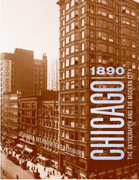
An ambitious reinterpretation of the works of Louis Sullivan, Daniel Burnham, and John Wellborn Root, this volume uses their towering achievements as a lens through which to view late nineteenth-century urban history. Joanna Merwood-Salisbury sheds new light on many of Chicago’s defining events—including violent building trade strikes, the Haymarket bombing, the World’s Columbian Exposition, and Burnham’s Plan of Chicago—by situating the Masonic Temple, the Monadnock Building, and the Reliance Building at the center of the city’s cultural and political crosscurrents.
While architects and property owners saw these pioneering structures as manifestations of a robust American identity, immigrant laborers and social reformers viewed them as symbols of capitalism’s inequity. Illuminated by rich material from the period’s popular press and professional journals, Merwood-Salisbury’s chronicle of this contentious history reveals that the skyscraper’s vaunted status was never as inevitable as today’s skylines suggest.
Joanna Merwood-Salisbury is Director of Academic Affairs and an Assistant Professor in the School of Constructed Environments at Parsons The New School for Design.
MAY 5
Andrew Dolkart
BIOGRAPHY OF A TENEMENT HOUSE IN NEW YORK CITY:
An Architectural History of 97 Orchard Street
(University of Virginia Press 2006)
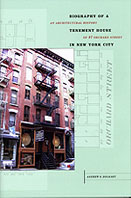
Andrew S. Dolkart is the James Marston Fitch Professor of Historic Preservation at Columbia University's Graduate School of Architecture of Architecture, Planning, and Preservation. He has written extensively about the architecture and development of New York, including the award-winning Morningside Heights: A History of Its Architecture and Development and the Guide to New York City Landmarks. He has curated numerous exhibitions and is well-known for his walking tours of New York City neighborhoods.
APRIL 29
Jean Parker Phifer
PUBLIC ART NEW YORK
(W.W. Norton 2009)
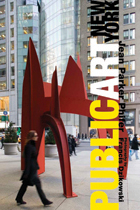
Architect Jean Phifer specializes in planning, renovation and sustainable design projects for cultural institutions and has designed or restored over fifty distinguished buildings, public spaces, and landscapes, primarily in New York. She was president of the Art Commission of the City of New York, now the Public Design Commission, from 1998 to 2003. Ms. Phifer is a Fellow of the American Institute of Architects and teaches Environmental Design at New York University. She lives in Manhattan.
Francis Dzikowski is an architectural photographer based in New York City.
The evening's introduction will be given by Michele H. Bogart, author of Public Sculpture and the Civic Ideal in New York City, 1890-1930 (University of Chicago Press, 1989), which received the Smithsonian Institution/ Museum of American Art's Charles C. Eldredge Prize in 1991; and of The Politics of Urban Beauty: New York and Its Art Commission (University of Chicago Press, 2006). From 1998 through 2003 she served as a member of the Art Commission of the City of New York, the City's design review agency, and for four years was its Vice President. She is presently a member of the Art Commission's Conservation Advisory Group and of the Board of Directors of the Fine Arts Federation. Ms. Bogart is a Professor and the Graduate Program Director of the Art Department at Stony Brook University.
FEBRUARY 26
Michael Rockland
THE GEORGE WASHINGTON BRIDGE: Poetry in Steel
(Rutgers University Press 2008)
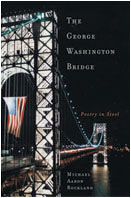

JANUARY 20
Max Page
THE CITY'S END: Two Centuries of Fantasies, Fears, and Premonitions of New York's Destruction (Yale University Press 2008)
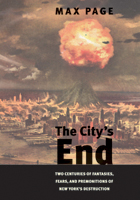
2008 BOOK TALKS
DECEMBER 16
Gail Fenske
THE SKYSCRAPER AND THE CITY: The Woolworth Building and the Making of Modern New York (University of Chicago Press)
CLICK HERE FOR GAIL FENSKE VIDEO ARCHIVE!
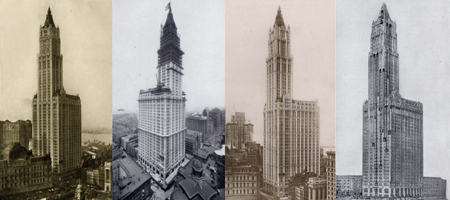 Images: The Skyscraper Museum Collection
Images: The Skyscraper Museum CollectionIn the first history of this great urban landmark, The Skyscraper and the City:
The Woolworth Building and the Making of Modern New York (University of Chicago Press),
author Gail Fenske illuminates how the Woolworth Building is a compelling lens
through which to view the distinctive city culture of Progressive Era New York.
2009 PROGRAMS
FEBRUARY 19
SUPER SLENDER MIDTOWN TOWERS

CLICK HERE FOR THE SLENDERNESS VIDEO ARCHIVE!
"Hong Kong slender" describes a type of pencil-thin tower common in Asia's Manhattan and recently
returned to New York real estate. In conjunction with its current exhibition,
"Vertical Cities: Hong Kong | New York",
The Skyscraper Museum examined the aesthetics, engineering, and economics of slenderness in a
program highlighting three tall, super-slim residential towers recently reared in Midtown:
Sky House, One Madison Park, and 785 Eighth Avenue. Team presentations by the architects,
structural engineers, and developers explored the complex equation of twenty-first century slenderness.
Featured projects and building team presenters include:
SKY HOUSE
Frank Lupo, Associate Principal, FXFOWLE Architects
Silvian Marcus, CEO, WSP Cantor Seinuk
Veronica Hackett, Co-Founder and Managing Partner, The Clarett Group
ONE MADISON PARK
John Cetra, Principal Architect, CetraRuddy
Silvian Marcus, CEO, WSP Cantor Seinuk
785 EIGHTH AVENUE
Ismael Leyva, President, Ismael Leyva Architects
Ysrael A. Seinuk, CEO, Ysrael Seinuk, PC
The exhibitions and programs of The Skyscraper Museum are supported by
public funds from the New York City Department of Cultural Affairs and the New York State Council on the Arts, a State Agency.



